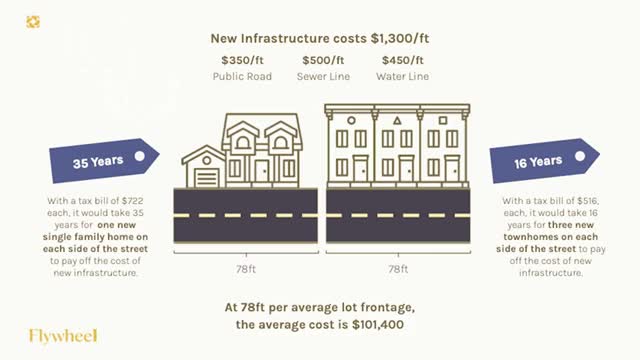Housing Crisis Unveiled as Cities Grapple with Affordability
September 30, 2024 | East Lansing, Ingham County, Michigan
This article was created by AI summarizing key points discussed. AI makes mistakes, so for full details and context, please refer to the video of the full meeting. Please report any errors so we can fix them. Report an error »

In a recent government meeting, officials discussed the pressing need for diverse housing options in East Lansing, emphasizing the financial implications of current zoning practices. The conversation highlighted that single-family homes, while traditionally favored, often do not generate sufficient tax revenue to cover infrastructure costs. For instance, a $450,000 single-family home would yield approximately $722 in new tax revenue, taking 35 years to offset infrastructure expenses, while alternative housing types like duplexes or fourplexes could recoup these costs in just 16 years.
The analysis revealed that 98% of vacant residential land in Kent County is zoned for single-family homes, despite a significant portion of the population being unable to afford such housing. By allowing attached single-family homes, the average lot cost could drop from $75,000-$100,000 to just $10,000-$25,000, effectively halving the income required to purchase a home from $120,000 to $68,000.
Concerns were raised about community resistance to such changes, particularly regarding property values. However, data from West Michigan communities showed that introducing townhouses and small-scale multifamily units often led to increased property values in adjacent single-family neighborhoods. This trend suggests that mixed-income neighborhoods can provide more stability and resilience, especially during economic downturns.
The meeting underscored the challenge of balancing community preferences with the need for affordable housing solutions. As East Lansing grapples with these issues, officials are urged to consider zoning reforms that could facilitate a broader range of housing types, ultimately fostering more inclusive and economically viable neighborhoods.
The analysis revealed that 98% of vacant residential land in Kent County is zoned for single-family homes, despite a significant portion of the population being unable to afford such housing. By allowing attached single-family homes, the average lot cost could drop from $75,000-$100,000 to just $10,000-$25,000, effectively halving the income required to purchase a home from $120,000 to $68,000.
Concerns were raised about community resistance to such changes, particularly regarding property values. However, data from West Michigan communities showed that introducing townhouses and small-scale multifamily units often led to increased property values in adjacent single-family neighborhoods. This trend suggests that mixed-income neighborhoods can provide more stability and resilience, especially during economic downturns.
The meeting underscored the challenge of balancing community preferences with the need for affordable housing solutions. As East Lansing grapples with these issues, officials are urged to consider zoning reforms that could facilitate a broader range of housing types, ultimately fostering more inclusive and economically viable neighborhoods.
View full meeting
This article is based on a recent meeting—watch the full video and explore the complete transcript for deeper insights into the discussion.
View full meeting
